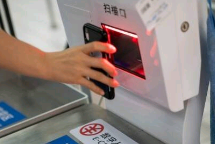
Japan is gearing up its preparation for the issuance of digital currency in both the public and private sectors following swift moves by China and other countries to do the same.
Virtual money issued by central banks around the world is called “central bank digital currency” or CBDC, and is used for cashless payments via smartphones or electronic cards. Some private companies, including one established by Facebook Inc., also plan to introduce their own digital currencies.
Digital currencies differ from credit cards and cashless payment services as they are expected to provide retailers commission-free payment systems. Users are able to not only settle payments at stores but also quickly send money to others via smartphone apps.
The People’s Bank of China is one of the leading issuers of CBDC.
It has accelerated its efforts to create the digital yuan this year, rolling out pilot programs that provided 200 digital yuan (about ¥3,200) to each of 150,000 citizens selected by lottery in Shenzhen in October and Suzhou earlier this month.
“China has prompted moves toward digital currency (around the world),” said Hiromi Yamaoka, a former senior official in charge of payment and settlement systems at the Bank of Japan. “It (has done so at) surprising speed, as central banks tend to take a cautious stance” on new systems, he added.
Yamaoka said he expects the Chinese central bank to officially issue the digital yuan by 2022, when it will host the Winter Olympics and Paralympics.
He is also pushing to issue a private-sector driven digital currency, currently chairing the “Digital Currency Forum” in Japan, which started a joint study for developments with around 30 major companies including Japan’s three megabanks of MUFG Bank, Sumitomo Mitsui Banking Corp. and Mizuho Bank.
In the fall, news reports of an emergence of a couple of digital currencies stunned the financial world. In October, central banks of the Bahamas in the Caribbean Sea and Cambodia started to issue their CBDCs named “Sand Dollar” and “Bakong,” respectively.
“We are seeing a once-in-a-millennium change in the history of currencies after the long-time use of currency notes following the world’s first introduction in China about 1,000 years ago,” said Masashi Nakajima, a professor at Reitaku University and a former BOJ official.
Nakajima said advances in technology including blockchain to counter cyberattacks and counterfeiting have largely contributed to the realization of digital currencies while people are now able to use CBDCs anywhere at any time via their smartphones.
Major central banks including the BOJ, the U.S. Federal Reserve and the European Central Bank as well as the Bank for International Settlements released a joint report in October, saying the group of central banks will collaboratively explore potential promotion of innovative payments.
“A CBDC could be an important instrument for central banks to fulfill their public policy objectives and to evolve in step with the wider digitalization of people’s day-to-day lives,” it added, but no major central banks have yet officially decided to introduce a CBDC.
The BOJ has said it will launch a feasibility study on its digital currency in fiscal 2021 starting in April. “The bank considers it important to prepare thoroughly to respond to changes in circumstances in an appropriate manner,” it said in a separate report.
“Demand (for a CBDC) could be suddenly strong. We aim to be well-prepared to respond to changes in our environment,” BOJ Gov. Haruhiko Kuroda told business leaders in Osaka in September when asked about digitalization for Japan’s payment systems.
But the BOJ is likely to take some years to decide whether to officially issue its digital currency, as are other major central banks.
“The design of a CBDC is very tricky and delicate,” Yamaoka said. “In advanced countries, a CBDC could conflict with existing payment and banking systems.”
For example, the credit card business could lose ground if consumers and retailers move toward CBDCs, which do not require application forms or commission fees.
Commercial banks could face disintermediation with a lower amount of deposits if people are inclined to hoard more CBDCs for convenience by converting money from their bank accounts, leading them to have fewer funds to lend money to companies and be reluctant to do so, experts said.
But Reitaku University’s Nakajima takes an optimistic attitude, saying setting the upper limit for transactions is one of the solutions.
“If each of 100 million people owns a tentative upper limit of ¥50,000 in the digital currency, the total amount would stand at ¥5 trillion,” he said.
“This figure accounts for only 5% of cash circulating in Japan. I don’t think the digital yen will affect commercial banks so much when the upper limit is imposed.”
Yamaoka’s Digital Currency Forum plans to start a feasibility study for its virtual currency next year, aiming at bridging the various existing cashless payment services and boosting interoperability by offering their “common” digital currency.
Yamaoka said the consortium hopes to create “some form” of digital currency, similar to Facebook’s Diem plan, by 2023 while seeking collaboration with the BOJ to develop technologies if possible.
“Japan would lag behind other countries if we take a wait-and-see stance until the rollout of the BOJ’s CBDC,” said Yamaoka, stressing that his consortium will aim to match the innovation for digital currencies in the world, even though the BOJ will take several years to issue its CBDC.
“We hope Japan leads (other major countries) for digital currency.”
*story by The Japan Times